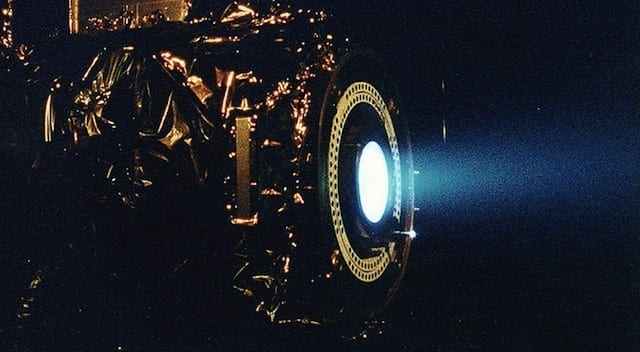Aisha’s invention is so promising that her university’s staff aided with a patent application
19-year-old Egyptian physics student Aisha Mustafa is someone we may see again in the media in the future because though young she’s patented a new type of propulsion system for spacecraft that makes use of an obscure, and only recently experimentally proven, quantum physics effect.
First, a little background: Quantum physics is hard to grasp using just common sense, which is why quantum scientist Erwin Schrodinger invented the story of his famous cat experiment. One of the non-common-sense quantum ideas that applies to this story is the notion that there’s no such thing as a vaccum, a perfectly and completely empty bit of space that has nothing–no particles, no waves, no energy–in it. Instead the empty spaces of the universe are filled with a boiling, roiling sea of bizarre particles and anti-particles that pop into existence out of sheer nothingness, then splatter together and annihilate completely back to nothingness in such an amazingly short space of time that you can’t detect them. Weird, indeed, but run with it: Quantum physics helped design the computer you’re reading this on.
What Mustafa has invented is a way of tapping this quantum effect via what’s known as the dynamic Casimir effect. This uses a “moving mirror” cavity, where two very reflective very flat plates are held close together, and then moved slightly to interact with the quantum particle sea…it’s all horribly sophisticated, but the end result is that Mustafa’s use of shaped silicon plates similar to those used in solar power cells results in a net force being delivered. A force, of course, means a push or a pull and in space this equates to a drive or engine.
In terms of space propulsion, this is amazing. Most forms of spacecraft rely on the rocket principle to work: Some fuel is made energetic and then thrust out of an engine, pushing the rocket forward. It’s tricky stuff to get right, particularly on Earth, which is why we shouldn’t be surprised SpaceX‘s recent launch stopped at the critical moment due to a problem with one of its chemical rocket engines. For in-space maneuvering, many different types of rocket are used, but even exotic ones like ion drives (shown in a NASA image above) need fuel. The only space drive that doesn’t involve hauling fuel and complex systems into orbit is a solar sail. And Mustafa’s invention can, rudimentarily, be compared to a solar sail…because it doesn’t need “fuel” as such, and exerts just the tiniest push compared to the thundery flames of SpaceX’s rockets. It’s potential is enormous–because of its mechanical simplicity and reliability it could make satellite propulsion lighter, cheaper, and thus indirectly lower the cost of space missions of all sorts.
via Fast Company – Kit Eaton
The Latest Streaming News: Spacecraft propulsion updated minute-by-minute








